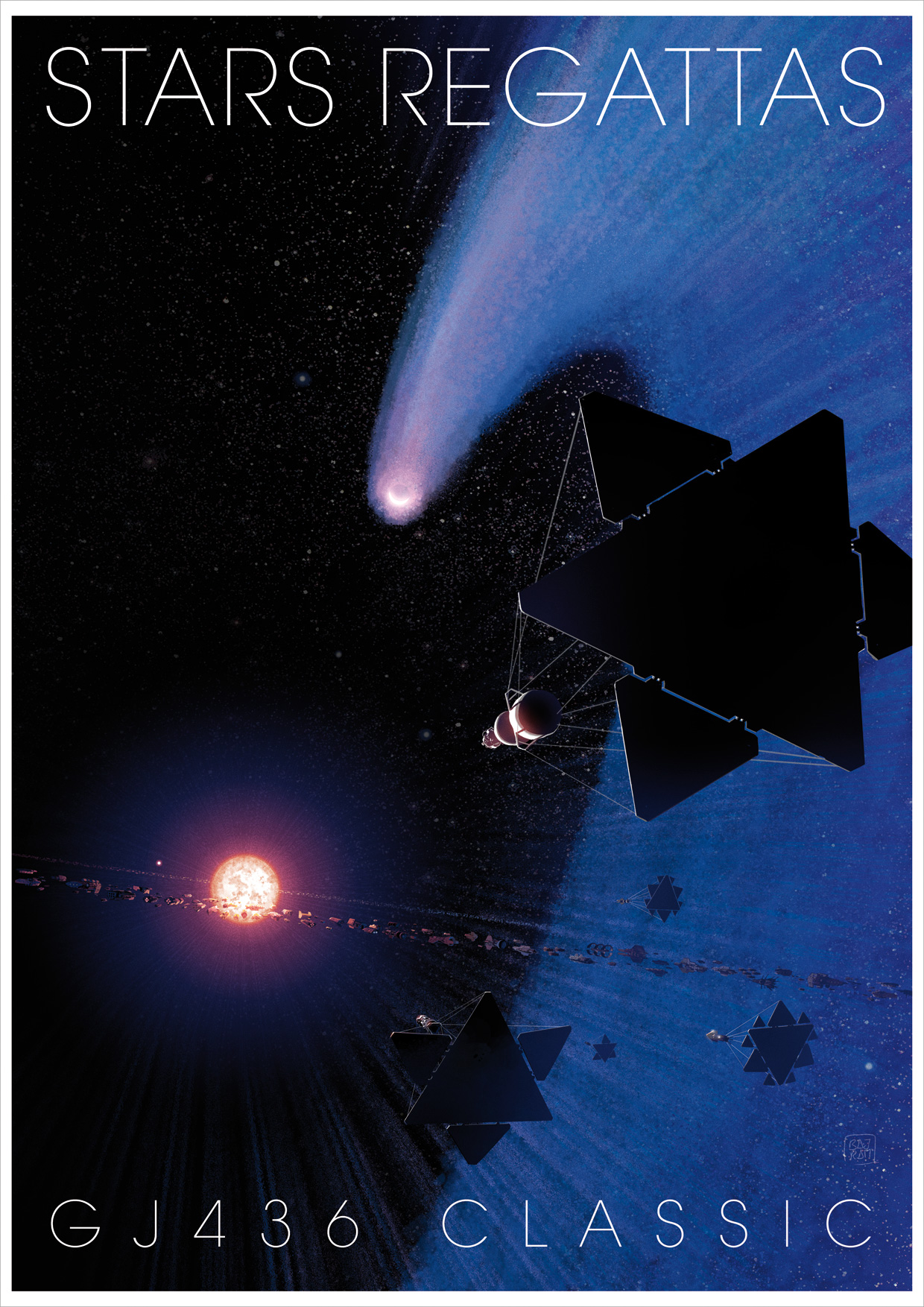Orbital mayhem around a red dwarf
An international team led by UNIGE, discovered that the GJ436b exoplanet, nicknamed «the comet-like exoplanet» because it evaporates like a comet, follows a very special elliptical orbit over the poles of its star. The discovery has been possible thanks to three observations of the transit of the planet (which occurs every 2.64 days) taken with the two high resolution spectrographs: HARPS (installed on the 3.6 m ESO telescope at the ESO La Silla Observatory, Chile) and HARPS-N installed at the Italian Telescopio Nazionale Galileo (Roque de Los Muchachos Observatory, La Palma, Canary Islands).
In the collective imagination, planets of a solar system all circle around their star, in the same plane that is also the equatorial plane of the star. The star also turns on itself, giving the impression that in a well-ordered system, the spin axes of the star and of the planetary orbits are aligned. But nature is capricious, as an international team led by researchers from the Department of Astronomy at the University of Geneva just found out: they detected a planetary system turned upside down. This discovery was published in the prestigious journal Nature.
GJ436 is a star that has already made much ink to flow, as it hosts a planet that evaporates like a comet; she has been nicknamed the hairy planet. In the study just published in the journal Nature, researchers at the University of Geneva showed that in addition to his gaseous mane, the planet GJ436b has a very special orbit. It is "polar": instead of turning in the equatorial plane of the star, the planet passes almost above the stellar poles.
The orbital inclination of this planet as big as four times the Earth is the last piece of a puzzle that has baffled astronomers for 10 years: instead of moving along a perfect circle around the star, GJ436b moves along an ellipse, that is, its distance to the star varies along its orbit. "This planet is under enormous tidal forces because it is incredibly close to its star, barely 3% of the Earth-Sun distance," explains Vincent Bourrier, the first author of the study and member of the European project FOUR ACES1. The star is a red dwarf, which has a very different structure of the Sun and should slow down the planet very effectively. "Its orbit should be perfectly circular, but this is not the case! "
Orbital architectures of planetary systems are fossil records that tell us how they have formed and evolved. A planet disturbed by the passage of a nearby star or by the presence of other massive planets in the system will keep track of it in its orbit. "Even if we have already seen misaligned planetary orbits, we do not necessarily understand their origin, especially since here is the first time we measure the architecture of a planetary system around a red dwarf "adds Christophe Lovis, co-author of the study. The existence of an unknown, more massive and more distant disturbing planet would explain why GJ436b is not on a circular orbit: "If that is true, then our calculations indicate that not only would the planet not move along a circle around the star, as we've known for 10 years, but it should also be on a highly inclined orbit. That's exactly what we just measured! " says with enthusiasm Hervé Beust, who did the orbital calculations.
These same calculations also predict that the planet has not always been so close to its star, but might have came near to it recently (on a cosmic scale). Thus, the "evaporating planet" would not always have evaporated, but would have been pushed towards the star by the gravity of a yet-undetected companion. For Vincent Bourrier, the hunt continues: "Our next goal is to identify the mysterious planet that has upset this planetary system. "

LICENSE CC BY-NC-SA 4.0 / Creative Commont Attribution-NonCommercial_ShareAlike 4.0 International
License text: https://creativecommons.org/licenses/by-nc-sa/4.0/legalcode

